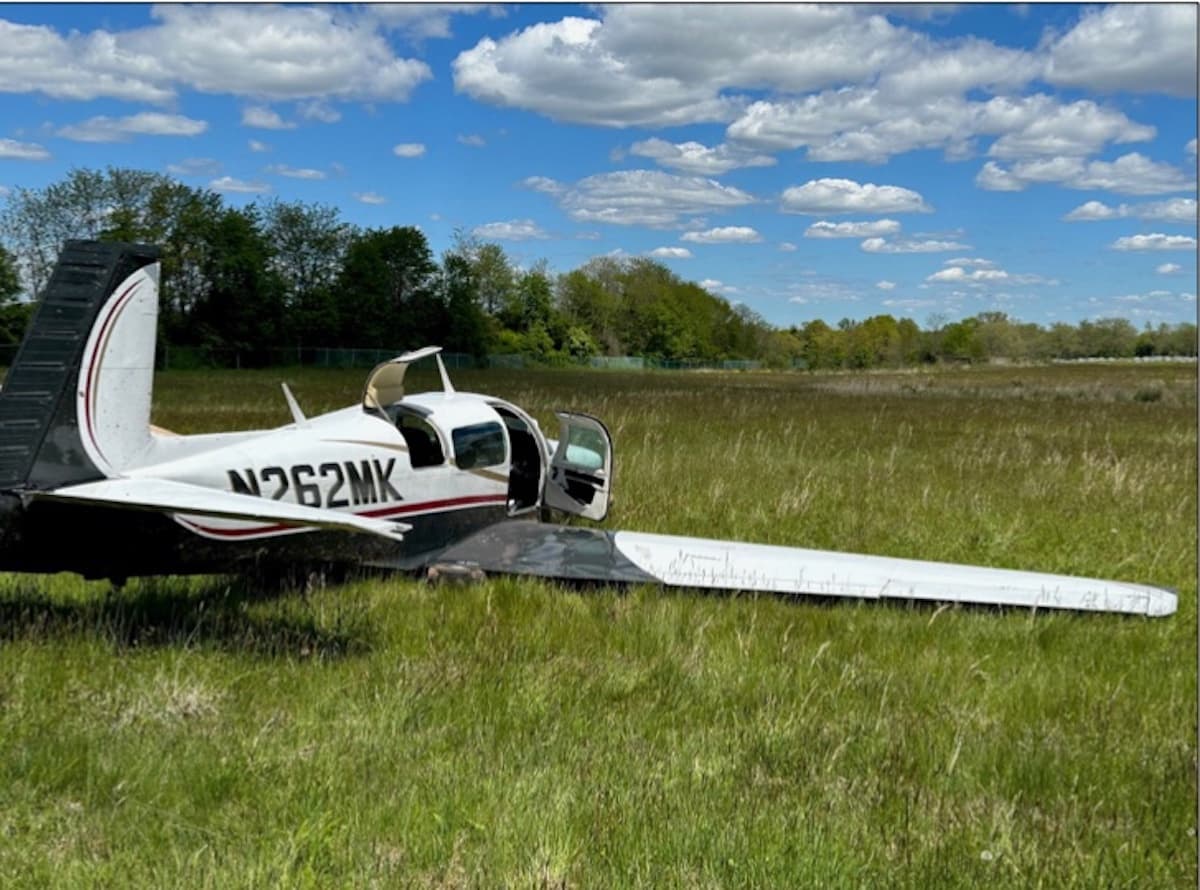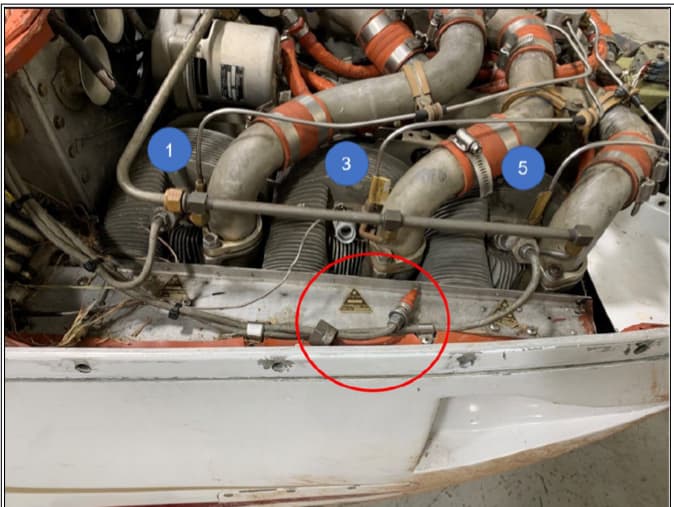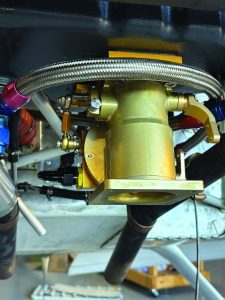
The pilot departed Brookhaven Airport (KHWV), in Shirley, New York, with a final destination of Hampton Roads Executive Airport (KPVG), in Chesapeake, Virginia.
The first segment of the cross-country flight was uneventful and the trip required a fuel stop, which was the purpose for landing at Central Jersey Regional Airport (47N), in Manville, New Jersey.
After adding about 70 gallons of 100LL in the Mooney M20K, the pilot taxied for departure from Runway 25.
He told investigators that on takeoff all engine gauges were in the green and he began the rotation after about 1,500 feet of ground roll. However, as the airplane entered the initial climb, “something just didn’t feel right.”
Upon reaching about 300 feet above ground level, he stated the engine began “slowing down,” similar to the sensation of taking one’s foot off the gas pedal while driving on a highway.
He ensured that the throttle, propeller, and mixture were full forward, but power was not restored. Shortly after the reduction in engine power, the left wing dropped and the airplane banked to the left and crashed in an open field.
Airport surveillance video captured the entire takeoff roll, initial climb, and descent towards the accident site. The video showed the airplane begin its takeoff rotation about 1,200 feet down the runway.
Once the airplane entered the initial climb, its wings rocked back and forth, and three distinct pitch up control applications could be observed as the airplane’s nose pitched up from a level attitude. Subsequently, the airplane entered a left bank with a pitch up attitude and descended towards the terrain south of Runway 25 before exiting out of the camera view.
The pilot sustained minor injuries in the crash.
Examination of the airplane revealed substantial damage to the fuselage and wings.
The engine remained attached to the firewall. Significant accumulation of dirt and sand was present on the bottom of the engine due to the impact with terrain, but the engine was largely free of any substantive impact damage. The propeller remained attached to its hub. It displayed leading edge gouging, blade polishing, and rearward bending.
The Nos. 1 and 5 cylinder top spark plug ignition harnesses were found loose to their respective spark plugs when touched by hand. The No. 3 top spark plug ignition harness was found completely unscrewed, detached, and lying next to the spark plug on top of the cylinder shroud.

The Nos. 2, 4, and 6 cylinder ignition harnesses were all found secured and tight to their spark plugs.
All top and bottom spark plugs were removed. Each were tight within the cylinders and each spark plug displayed normal combustion signatures.
The crankshaft was rotated by hand. Thumb compression was observed on all the cylinders. The accessory section components rotated normally. All ignition harnesses produced spark when the crankshaft was rotated by hand. The rocker covers were removed and each valve moved normally with crankshaft rotation.
There was no evidence of oil leakage on the engine or cowling.
The fuel manifold valve was intact and installed to its installation area. It was removed and disassembled. The manifold contained fuel and the fuel filter screen was free of debris. The engine-driven mechanical fuel pump rotated by hand without anomalies and fuel was present in the pump.
On April 16, 2023, a maintenance endorsement noted that the crankshaft seal was replaced. The intake gaskets on the Nos. 2, 4, and 6 cylinders were replaced. The propeller was removed, overhauled, and re-installed.
The pilot reported that after that maintenance, a 30-minute test flight was performed with no anomalies observed.
The cross-country flight that he initiated on the day of the accident, May 6, 2023, was the first flight since the maintenance test flight. Based upon the airplane’s tachometer, a total of 1.5 hours had been flown since the maintenance was performed.
The mechanic who performed the maintenance in April of 2023 reported that the airplane owner wanted him to troubleshoot a small amount of oil leakage coming from the engine, which the pilot noticed accumulating on the forward windscreen during past flights.
During the mechanic’s troubleshooting, he observed evidence of oil leakage on the top of the engine and near the propeller hub. The propeller was removed, overhauled, and reinstalled. While the propeller was being overhauled, he removed the old crankshaft sealant and applied new sealant on the spine of the engine.
The mechanic reported that he did not recall servicing any spark plugs during this most recent maintenance in April 2023, nor did he recall removing any ignition harnesses while accomplishing work on other areas of the engine.
Probable Cause: The partial loss of engine power due to maintenance personnel’s failure to ensure that the ignition harnesses were properly secured and the pilot’s inappropriate pitch control inputs, which resulted in the airplane exceeding its critical angle of attack and subsequently entering an aerodynamic stall.
NTSB Identification: 130453
To download the final report. Click here. This will trigger a PDF download to your device.
This May 2023 accident report is provided by the National Transportation Safety Board. Published as an educational tool, it is intended to help pilots learn from the misfortunes of others.




